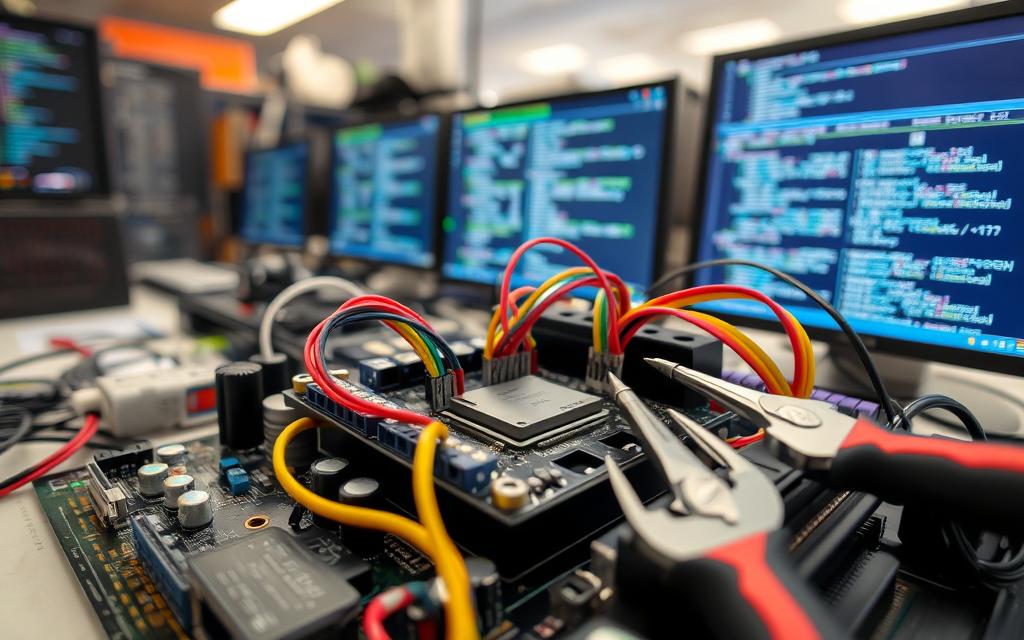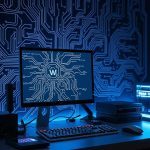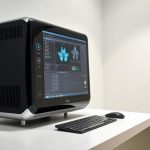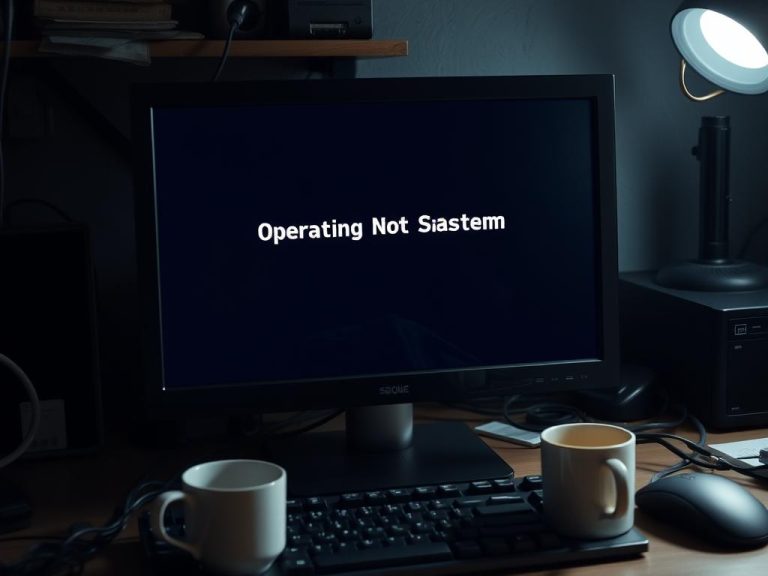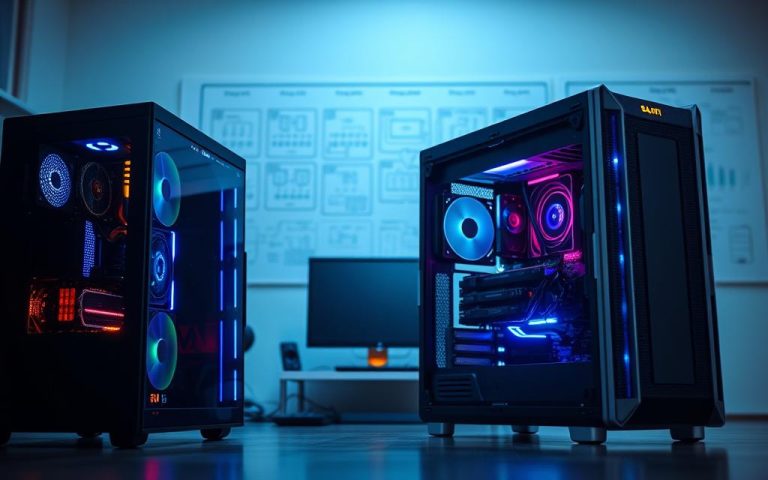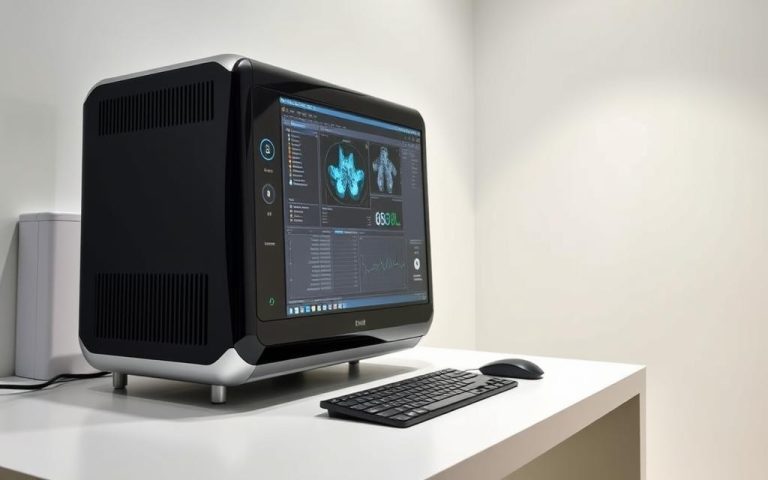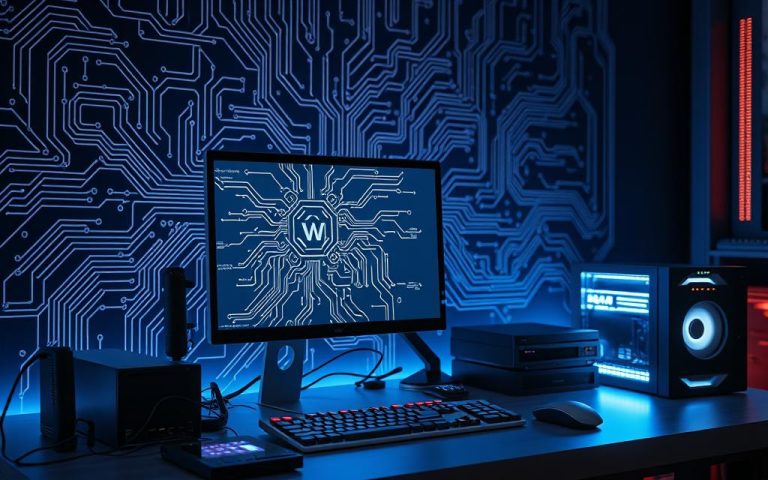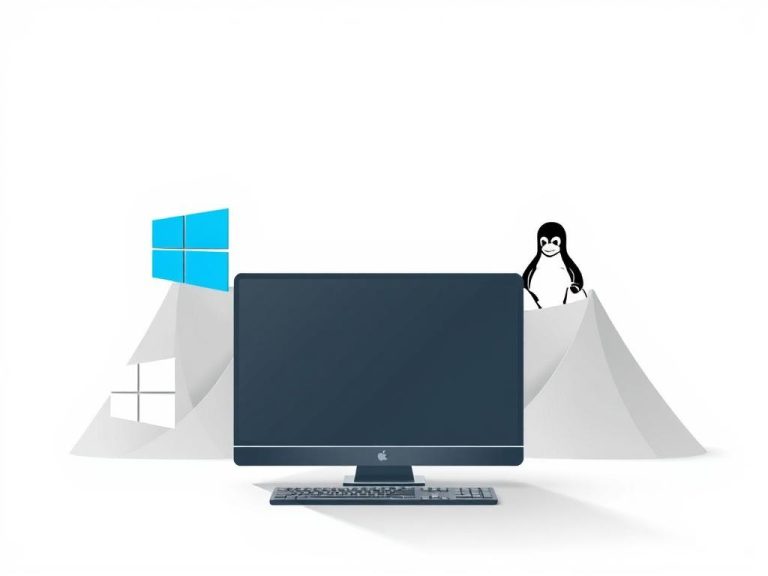How to Modify Your Computer System: A Step-by-Step Guide
Modifying your computer system is easy with the right help. This article will guide you through both hardware and software changes. It’s perfect if you want to boost your system’s performance or just learn more.
Changing your computer can make your experience much better. Our guide will show you how to do it, from start to finish. You’ll learn how to make your system work better and more efficiently.
Our guide will help you upgrade your system with ease. You’ll learn how to set it up, install software, and change hardware. We aim to give you a full understanding of modifying your computer and the skills to improve it.
Understanding Your Computer System Before Modifications
To make smart choices about changing your computer, you need to know what you have. This means looking at your hardware, seeing what your system can do, and checking if new parts will fit. Knowing this helps you pick the right upgrades and makes the changes easier.
When you want to change your computer, hardware specifications are key. You should think about the processor, RAM, and storage. Also, make sure any new parts will work well with what you already have.
Identifying Your Current Hardware Specifications
To find out about your hardware, check your computer’s manual or use software to scan it. This tells you about your processor, RAM, storage, and more. With this info, you can see which upgrades will boost your system’s performance the most.
Assessing Your System’s Performance
Looking at your system’s performance means seeing how it does now and where it can get better. Look for slow spots, like a slow processor or not enough RAM. Knowing this helps you choose the best upgrades for better performance.
Determining Compatibility Requirements
It’s important to make sure new parts will work with your system. Check if they match your computer’s specs and your operating system. This avoids problems and makes the changes go smoothly.
Some important things to think about when checking compatibility include:
- Processor type and speed
- Amount of RAM and type of RAM
- Storage capacity and type of storage
- Operating system and version
By understanding your computer and checking compatibility, you can choose the right upgrades. This improves your system’s performance, speed, and how quickly it responds.
| Component | Compatibility Requirement |
|---|---|
| Processor | Must be compatible with motherboard |
| RAM | Must be compatible with processor and motherboard |
| Storage | Must be compatible with motherboard and operating system |
Essential Safety Measures and Preparation
When you’re modifying your computer, it’s key to follow safety measures and preparation steps. This helps avoid damage and makes the process smoother. You should back up your important data, work in a safe area, and avoid electrical shocks or other hazards.
First, plug your laptop into a socket with the A/C adapter and charge it. Connect your mouse and keyboard for a better working setup. Keeping your computer clean helps prevent overheating and dust buildup.
Some important safety measures include:
- Regularly clean your computer’s keyboard and case with compressed air canisters
- Update your antivirus software to fight malware and viruses
- Change your passwords often to keep your device secure
- Run disk cleanup and defragment your hard drive for better performance
By following these preparation steps and taking key safety measures, you can avoid expensive repairs and early device failure. Always focus on your computer’s maintenance and take the right precautions for a safe and successful modification.
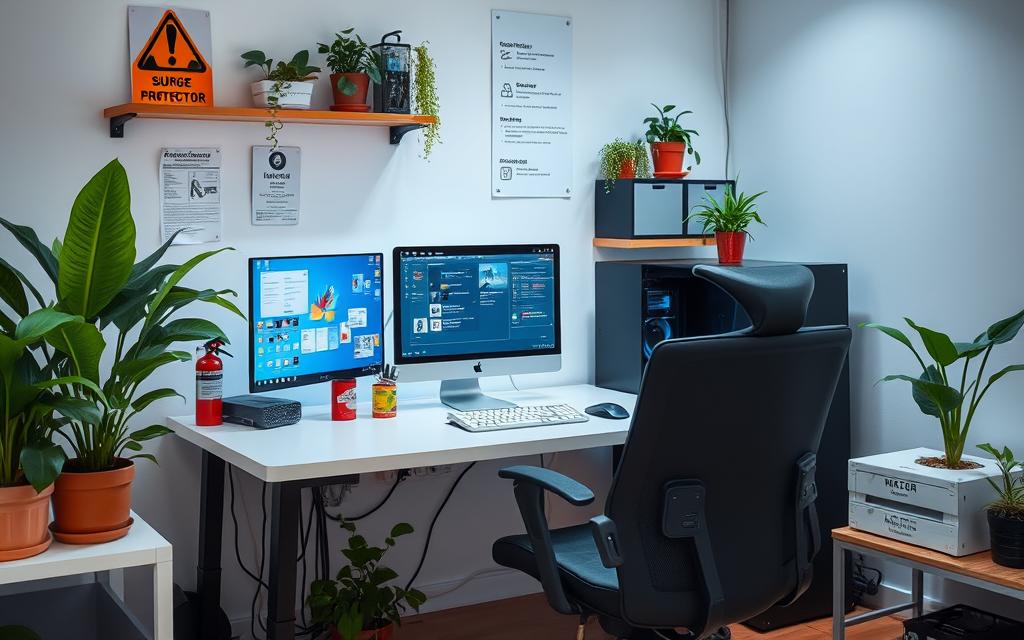
How to Modify Your Computer System: Basic Principles
Modifying your computer system needs a good grasp of the basics. You must know about performance bottlenecks, upgrade priorities, and setting achievable goals. This knowledge helps you decide which upgrades to make and how to reach your goals.
First, understand the modification principles at play. This means checking your system’s current setup to spot areas for betterment. This way, you can figure out the best upgrade priorities and tackle performance bottlenecks effectively.
Important things to think about when tweaking your computer include:
- Figuring out which parts to upgrade first, like the processor or RAM
- Checking if new parts will work with what you already have
- Setting clear goals for the upgrade, like your budget and timeline
By sticking to these modification principles and focusing on upgrade priorities, you can tackle performance bottlenecks well. Always do your homework and plan well before making any changes to your computer.
For instance, to boost your system’s speed, think about adding more RAM or swapping your hard drive for a solid-state one. Knowing the modification principles and upgrade priorities helps you make smart choices and get the best results.
| Component | Upgrade Priority | Performance Bottleneck |
|---|---|---|
| Processor | High | CPU-intensive tasks |
| RAM | Medium | Memory-intensive applications |
| Hard Drive | Low | Storage capacity and speed |
Hardware Modifications and Upgrades
Understanding the benefits of hardware modifications is key. Upgrading your computer can make it run better. This includes smoother multitasking and better gaming. Focus on RAM installation, storage, and graphics card upgrades.
Adding more RAM makes multitasking easier and apps launch faster. Upgrading to a solid-state drive (SSD) speeds up data access and boots faster. For gamers and graphics users, a new graphics card is a big plus.
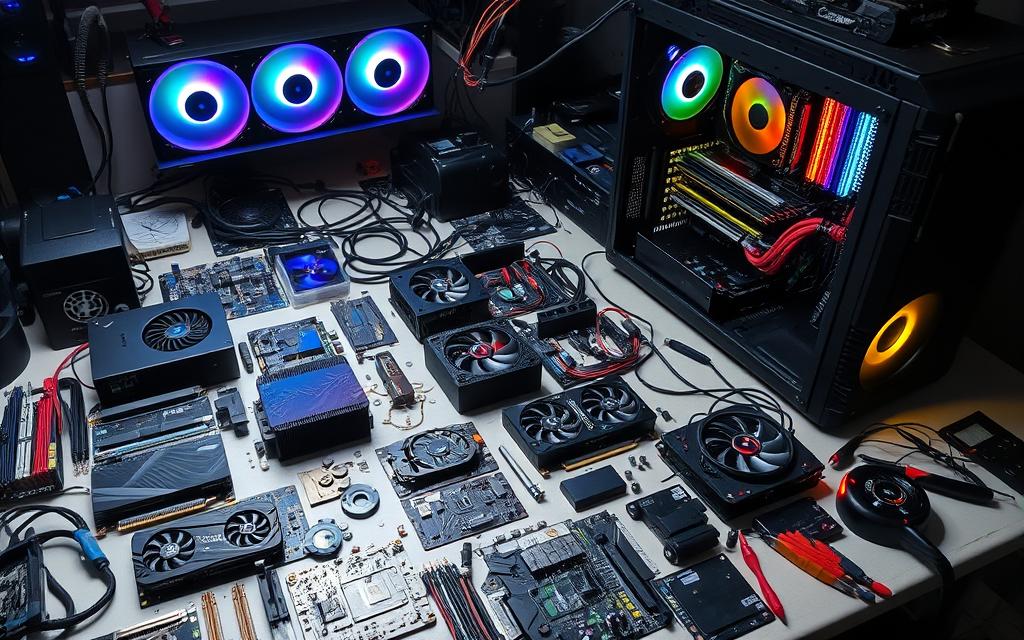
RAM Installation and Optimisation
- Check your system’s maximum RAM capacity.
- Ensure compatibility with existing RAM modules.
- Install the new RAM, following your computer’s manual instructions.
Storage Drive Improvements
Think about getting an SSD for quicker performance. Make sure you have enough space on your current drive to avoid problems.
Graphics Card Upgrades
Upgrading the graphics card is great for gamers and graphics pros. Use tools like GPU UserBench to compare your current card with new ones.
Software Optimisation Techniques
Optimising your computer’s software is key to better performance. Removing unused programs and big files frees up space and boosts speed. Also, keeping your operating system and drivers up to date helps with stability and performance.
Limiting startup programs can make your computer faster. Programming optimization makes software run smoother by cutting down on time and resources. This is done by simplifying code and improving data handling.
Some top software optimisation methods include:
- Using Ninite for easy software installation
- Adjusting system settings for better power use
- Optimising calculations to save CPU time
These techniques can greatly enhance your system’s performance. This leads to a more enjoyable user experience. 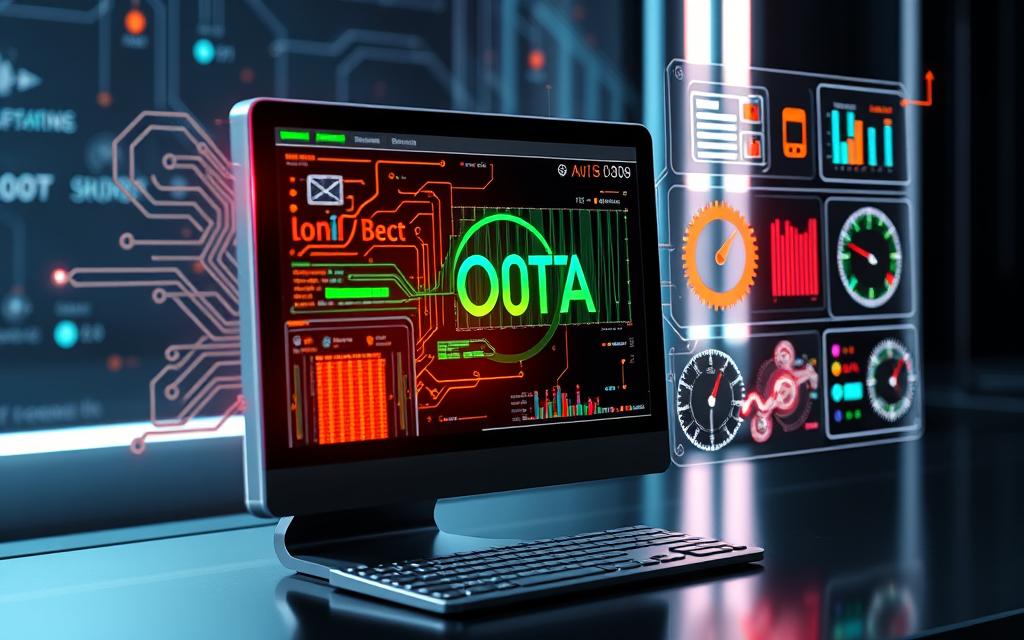
| Technique | Description |
|---|---|
| Loop optimization | Reduces CPU cycles and memory by simplifying loops |
| Equation simplification | Saves CPU and memory by making complex equations simpler |
Advanced BIOS and Firmware Updates
Updating your computer’s BIOS and firmware is key. BIOS updates help your hardware work well with your operating system. They also boost performance and add security patches. Firmware updates, by contrast, make specific hardware components work better.
To get into BIOS settings, restart your computer and press a key like F2, F12, or Del. This depends on your motherboard. In BIOS, you can tweak settings to speed up your system’s start-up. It’s also important to keep your system updated for the latest security and features.
Updating your BIOS can fix security holes, bugs, and compatibility problems. It also makes your system run faster. Before you update, check your BIOS version and back up your data. Use a USB drive for the update and follow the manufacturer’s guide to avoid problems.
- Download the correct update from the manufacturer’s website
- Prepare a USB drive and enter the BIOS setup
- Select the update file and initiate the update process
- Avoid interrupting the update process to prevent system issues
By following these steps, you can keep your system running well and safely. Always follow the manufacturer’s guide and be careful to avoid risks.
Cooling System Enhancements
To keep your computer running well, you need a good cooling system. A well-designed cooling system boosts your system’s efficiency and reliability. It’s important to have good airflow to keep the system cool and dust-free.
Improving airflow is easy. Make sure your system has enough ventilation. Use cable ties to keep cords tidy. This helps your cooling system work better. Also, using top-notch thermal paste, like Arctic Silver 5, can cool your CPU by up to 20°C.
Airflow Optimization Techniques
- Ensure adequate ventilation to facilitate airflow
- Use cable ties or clips to organize cords and reduce clutter
- Install intake fans to outnumber exhaust fans, maximizing airflow and reducing dust buildup
These tips can make your cooling system much better. It will run cooler and last longer. Don’t forget to clean your fans and heatsink regularly to keep everything running smoothly.
Thermal Paste Application and Fan Configuration
Choosing the right thermal paste and fan setup is key. Good thermal paste helps transfer heat better. A well-placed fan setup improves airflow and cuts down on noise. By following these tips, you can make your cooling system very efficient.
| Cooling System Component | Recommended Configuration |
|---|---|
| Intake Fans | Outnumber exhaust fans |
| Exhaust Fans | Install at least one |
| Thermal Paste | Use high-quality paste, such as Arctic Silver 5 |
Troubleshooting Common Modification Issues
When you modify your computer, you might face troubleshooting challenges. Modification issues can happen for many reasons. These include hardware conflicts, software problems, or setting up things wrong. To fix these common problems, you need a clear plan.
Experts say that 9 out of 10 freezing computer issues can be fixed by just restarting. Slow internet can also be caused by IP address conflicts. These can often be solved by restarting your modem or router. Some common problems during modification include:
- Slow application performance, which can be caused by fragmentation on the C drive (C:)
- Hearing loud clicking or grinding noises from a computer, often indicating hardware failure related to cooling fans or hard drives
- BSOD (Blue Screen of Death), which usually indicates hardware-related issues and may require further diagnostics
To tackle these issues, knowing how to troubleshoot is key. This means finding the problem’s source, updating software, and setting up your system for better power use. By doing these steps and knowing about modification issues, you can make your changes smoothly.
Remember, troubleshooting is a continuous effort. It needs patience, persistence, and careful attention. By staying calm and methodically solving the problem, you can overcome even the toughest common problems. This way, you’ll get your system working well again.
Conclusion: Maximising Your Modified System’s system system system system system system system system system system system system system system system system system system system system system system system system system system system system system system system system system system system system system system system system system system system system system system system system system system system system system system system system system system system system system system system system system system system system system system system system system system system system system system system system system system system system system system system system system system system system system system system system system system system system system system system system system system system system system system system system system system system system system system system system system system system system system system system system system system system system system system system system system system system system system system system system system system system system system system system system system system system system system system system system system system system system system system system system system system system system system system system system system system system system system system system system system system system system system system system system system system system system system system system system system system system system system system system system system system system system system system system system system system system system system system system system system system system system system system system system system system system system system system system system system system system system system system system system system system system system system system system system system system system system system system system system system system system system system system system system system system system system system system system system system system system system system system system system system system system system system system system system system system system system system system system system system system system system system system system system system system system system system system system system system system system system system system system system system system system system system system system system system system system system system system system system system system system system system system system system system system system system system system system system system system system system system system system system system system system system system system system system system system system system system system system system system system system system system system system system system system system system system system system system system system system system system system system system system system system system system system system system system system system system system system system system system system system system system system system system system system system system system system system system system system system system system system system system system system system system system system system system system system system system system system system system system system system system system system system system system system system system system system system system system system system system system system system system system system system system system system system system system system system system system system system system system system system system system system system system system system system system system system system system system system system system system system system system system system system system system system system system system system system system system system system system system system system system system system system system system system system system system system system system system system system system system system system system system system system system system system system system system system system system system system system system system system system system system system system system system system system system system system system system system system system system system system system system system system system system system system system system system system system system system system system system system system system system system system system system system system system system system system system system system system system system system system system system system system system system system system system system system system system system system system system system system system system system system system system system system system system system system system system system system system system system system system system system system system system system system system system system system system system system system system system system system system system system system system system system system system system system system system system system system system system system system system system system system system system system system system system system system system system system system system system system system system system system system system system system system system system system system system system system system system system system system system system system system system system system system system system system system system system system system system system system system system system system system system system system system system system system system system system system system system system system system system system system system system system system system system system system system system system system system system system system system system system system system system system system system system system system system system system system system system system system system system system system system system system system system system system system system system system system system system system system system system system system system system system system system system system system system system system system system system system system system system system system system system system system system system system system system system system system system system system system system system system system system system system system system system system system system system system system system system system system system system system system system system system system system system system system system system system system system system system system system system system system system system system system system system system system system system system system system system system system system system system system system system system system system system system system system system system system system system system system system system system system system system system system system system system system system system system system system system system system system system system system system system system system system system system system system system system system system system system system system system system system system system system system system system system system system system system system system system system system system system system system system system system system system system system system system system system system system system system system system system system system system system system system system system system system system system system system system system system system system system system system system system system system system system system system system system system system system system system system system system system system system system system system system system system system system system system system system system system system system system system system system system system system system system system system system system system system system system system system system system system system system system system system system system system system system system system system system system system system system system system system system system system system system system system system system system system system system system system system system system system system system system system system system system system system system system system system system system system system system system system system system system system system system system system system system system system system system system system system system system system system system system system system system system system system system system system system system system system system system system system system system system system system system system system system system system system system system system system system system system system system system system system system system system system system system system system system system system system system system system system system system system system system system system system system system system system system system system system system system system system system system system system
FAQ
What is the importance of modifying a computer system?
Modifying your computer can make it run better and faster. It can also add new features. By upgrading, you can make your system more efficient and powerful.
What should I consider before making any modifications to my computer system?
Before you start, know what you have. Check your hardware and see what you can improve. This helps you choose the right upgrades and avoid problems.
What safety measures should I take when modifying my computer system?
Always be careful when changing your computer. Back up your files and work in a safe place. This prevents damage and keeps your data safe.
What are the basic principles involved in modifying a computer system?
Understanding your system is key. Know what slows it down and what to upgrade first. This helps you make smart choices and get the best results.
What hardware modifications and upgrades can I make to enhance my computer system’s performance?
Upgrading your hardware can boost your system’s speed. We’ll show you how to add more RAM, improve storage, and upgrade your graphics card.
How can I optimise the software on my computer system?
Optimising your software is vital. It makes your system faster and more efficient. We’ll share tips to help you get the most from your software.
How can I safely update my computer system’s BIOS and firmware?
Updating BIOS and firmware needs care. We’ll guide you on how to safely access BIOS settings and manage updates. This ensures your system runs smoothly.
How can I enhance the cooling system of my computer?
Keeping your system cool is important. We’ll talk about improving airflow, using thermal paste, and setting up fans. Follow our steps to keep your system cool.
What are some common modification issues I might encounter, and how can I troubleshoot them?
Dealing with problems is part of the process. We’ll cover common issues and how to fix them. This helps you solve problems quickly and efficiently.
FAQ
What is the importance of modifying a computer system?
Modifying your computer can make it run better and faster. It can also add new features. By upgrading, you can make your system more efficient and powerful.
What should I consider before making any modifications to my computer system?
Before you start, know what you have. Check your hardware and see what you can improve. This helps you choose the right upgrades and avoid problems.
What safety measures should I take when modifying my computer system?
Always be careful when changing your computer. Back up your files and work in a safe place. This prevents damage and keeps your data safe.
What are the basic principles involved in modifying a computer system?
Understanding your system is key. Know what slows it down and what to upgrade first. This helps you make smart choices and get the best results.
What hardware modifications and upgrades can I make to enhance my computer system’s performance?
Upgrading your hardware can boost your system’s speed. We’ll show you how to add more RAM, improve storage, and upgrade your graphics card.
How can I optimise the software on my computer system?
Optimising your software is vital. It makes your system faster and more efficient. We’ll share tips to help you get the most from your software.
How can I safely update my computer system’s BIOS and firmware?
Updating BIOS and firmware needs care. We’ll guide you on how to safely access BIOS settings and manage updates. This ensures your system runs smoothly.
How can I enhance the cooling system of my computer?
Keeping your system cool is important. We’ll talk about improving airflow, using thermal paste, and setting up fans. Follow our steps to keep your system cool.
What are some common modification issues I might encounter, and how can I troubleshoot them?
Dealing with problems is part of the process. We’ll cover common issues and how to fix them. This helps you solve problems quickly and efficiently.

